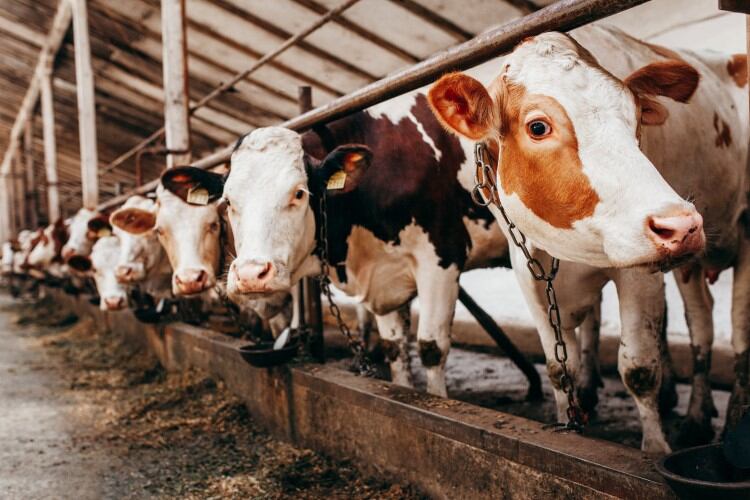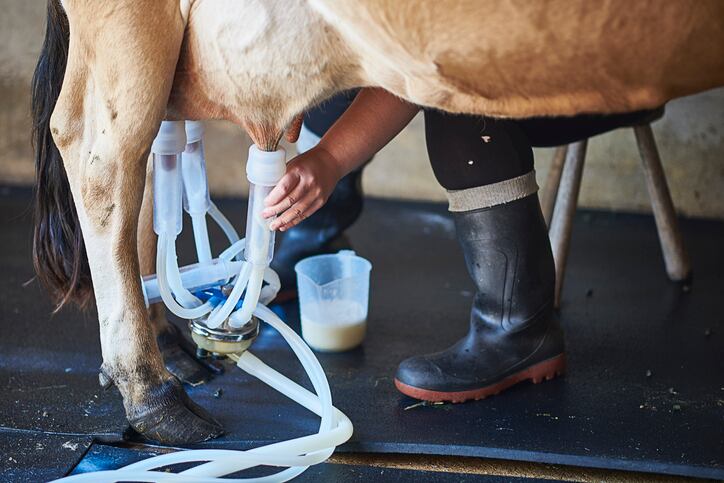The first-of-its-kind project is a collaboration between the British universities of Reading, Essex, Cardiff and Writtle University College and brings together experts in animal and dairy sciences, mathematical modelling and statistics, and building design engineering.
Heat stress leads to low productivity and behavior changes in cattle. But while prior studies have been conducted to establish the adverse link between hot weather and cow welfare, researchers have never before examined in such detail how barn microclimates – the combination of temperature, humidity, air quality and ventilation – can affect the animals’ physiological status.
The £1.24m study funded by the Biotechnology and Biological Sciences Research Council will be carried out over three years and take place at the University of Reading’s Centre for Dairy Research (CEDAR) and six commercial dairy farms across the UK. The research consortium also has industry support from the UK Agriculture and Horticulture Development Board (AHDB), The Dairy Group, Etex, Innovation for Agriculture, and Map of Ag, as well as the UK government’s Department for the Environment, Food and Rural Affairs.
DairyReporter reached out to the University of Reading to find out more about the project and its aims, and received responses from the entire team of investigators.
Asked how much dairy barn design has evolved over the years, we were told that much of the ‘innovation’ has been to do with improving herd management practices (such as increasing passage widths to help with flow and slurry management), while adaptations to pen design have been aimed at increasing cow comfort when lying.
“Like most UK housing, dairy barns in the UK are not typically designed to withstand extreme heatwaves,” said Chris Reynolds, Professor of Animal and Dairy Sciences at the University of Reading. “These barns may incorporate passive cooling features like natural ventilation, and mechanical methods such as fans can also be utilized for cooling purposes, but could consume extra energy. In other countries, misting systems are also used along with fans.”
Just how important this project is for gaining granular understanding in the issue of heat stress is the fact that it’s the first of its kind to examine so many environmental factors and relate them to cow’s health status. “Most work with heat stress has used a single temperature from the barn or even external to the barn to estimate the level of heat stress," we were told. "However, pilot work at CEDAR has shown that there are differences in temperature in different areas of the barn. These could lead to behavioural patterns, which might actually exacerbate heat stress, such as bunching, and are likely to affect sick or lower-ranking cows most.”
Example of the behaviors that can be monitored are increased water intake; seeking shelter or areas that are ventilated, or exhibiting specific individual and social behavioral responses.
‘Unprecedented detail’
All this data will be accessible through bespoke tracking and sensing technology provided by Cambridge, UK-based companies Smartbell and Omnisense. These solutions offer real-time data of the physical condition of each cow, allowing the researchers to piece together just how different barn environment variables can affect animal health.
“The technologies offer us unprecedented detail, from which researchers and industry can work towards climate resilient and cow-centered building design,” professor Reynolds told us. “Omnisense can give us the position and activity of each cow every few seconds, with a positional accuracy of less than one meter. Smartbell can give us a proxy for body temperature and activity for every cow. With these sensors, we can monitor the types of behaviors the animal is undertaking - e.g. feeding, lying, or standing - the location they are doing it in, and their physiological status.”
“Over a longitudinal study, we can observe in detail how the behavior of individual cows changes over time, with particular focus on the summer months when heat stress is most prevalent."
As well as the monitoring the cows, there will be a network of environmental sensors across the barn to measure temperature, humidity, carbon dioxide and ammonia concentrations, and air flow. "From this, we can begin to understand the complex interactions between animal behaviours within housing microclimates,” the investigators explained.
The project will take place over three years, with the researchers working with groups of farmers and the industry steering group throughout in order to share information that could help them co-design potential mitigation measures. “We aim to share useful results with industry as soon as possible through the project steering group, but will also host an online dissemination event towards the end of the study to share the findings,” said Reynolds.
Meanwhile, the six commercial farms – which are located in the south and west of the UK – have diverse building design features and were chosen to take part in the study by steering group members.
Given the importance of technology in harvesting the data that the study will rely on for its conclusions, we asked how valuable has monitoring technology become for the wider dairy sector – and if solutions such as those used in the trial are becoming more prevalent and financially accessible. “Precision livestock technologies have already been shown to benefit farm economics, aid decision-making and animal welfare,” said Dr Zoe Barker, lecturer in Animal Sciences at the University of Reading and part of the research team.
“Whilst technology uptake is currently greater on larger farms, improved monitoring systems will be valuable to all producers.”
“Early detection of disease, oestrus detection, and feeding behaviour are all important factors for milk production, and high-quality research findings are important to support increased adoption of this technology,” Dr Barker added.
Dr Jonathan Amory, principal lecturer in animal behaviour and welfare at Writtle University College, concluded: “The climate crisis is bringing new challenges to animal welfare. By utilising new technology and working with industry, we can develop innovative solutions for improving livestock management.”


